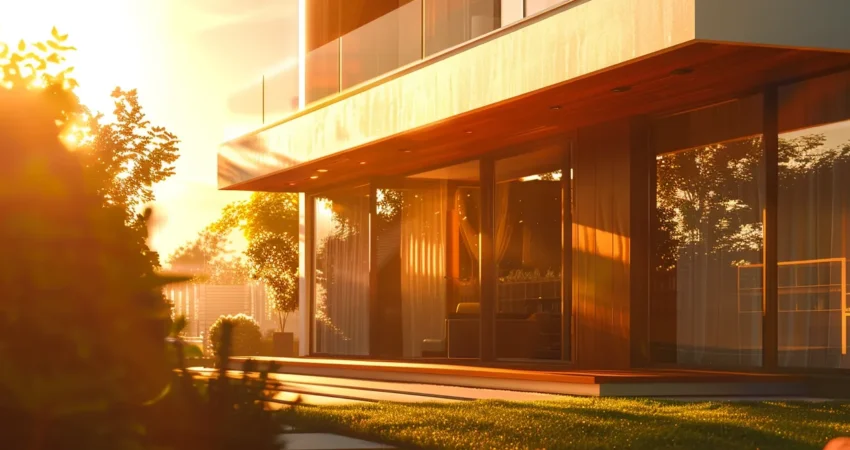- December 19, 2024
- Blacksheep Construction
Table Of Contents:
- Maximizing Sustainability: The Advantages of Energy-Efficient Building Materials for Your Next Project
- Key Takeaways
- Understanding Energy-Efficient Building Materials
- Key Advantages of Using Energy-Efficient Materials in Your Project
- Popular Types of Energy-Efficient Building Materials
- How to Choose the Right Energy-Efficient Materials
- Integrating Energy-Efficient Materials Into Your Design
- Real-World Success Stories and Case Studies
- Conclusion
Maximizing Sustainability: The Advantages of Energy-Efficient Building Materials for Your Next Project
Are you looking to enhance the sustainability of your next construction project? Energy-efficient building materials offer a practical solution to reduce environmental impact while improving overall performance. This article will explore the key advantages of using these materials, popular types available, and how to effectively integrate them into your design. By understanding these concepts, homeowners can make informed decisions that not only address issues like humidity control but also align with sustainable development goals. Black Sheep Construction is here to guide you through the process, ensuring your project utilizes renewable resources effectively.
Key Takeaways
- Energy-efficient materials significantly reduce energy consumption and utility costs for homeowners
- Low-emissivity windows enhance indoor comfort by minimizing heat loss throughout the year
- Sustainable building materials improve indoor air quality and promote healthier living environments
- Utilizing recycled materials contributes to environmental conservation and supports a circular economy
- Integrating advanced systems with energy-efficient materials maximizes overall building performance and sustainability
Understanding Energy-Efficient Building Materials
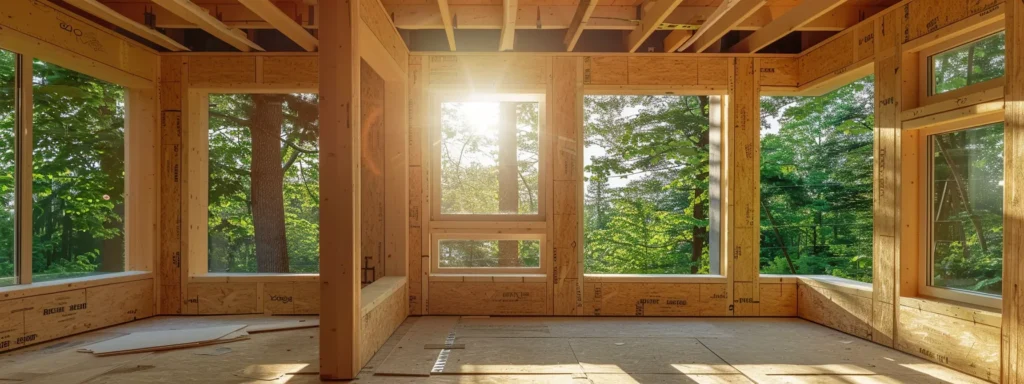
Energy-efficient building materials are defined by their ability to reduce energy consumption and enhance sustainability in home construction. This section will explore what makes materials like low emissivity windows, cellulose insulation, plastic components, and composite lumber energy-efficient. It will also address the environmental impact of traditional versus sustainable materials, common misconceptions about these products, and the lifecycle benefits they offer from black sheep construction.
Understanding these aspects is crucial for anyone looking to maximize sustainability in their next project, as energy-efficient materials play a vital role in green building practices.
What Makes a Building Material Energy-Efficient
Energy-efficient building materials are characterized by their ability to minimize waste and enhance environmental quality throughout the construction process. For instance, materials like low-emissivity windows and cellulose insulation significantly reduce heat transfer, leading to lower energy consumption for heating and cooling. Additionally, using sustainable concrete alternatives can further improve a building’s overall efficiency, contributing to a more sustainable construction approach that benefits both the environment and the homeowner.
Environmental Impact of Traditional vs. Sustainable Materials
The environmental impact of traditional materials often includes higher energy consumption and increased greenhouse gas emissions during production and use. In contrast, sustainable energy solutions, such as advanced building insulation and energy-efficient systems like heat pumps, significantly reduce the reliance on air conditioning and other energy-intensive appliances. By opting for sustainable materials, homeowners can lower their energy bills and contribute to a healthier environment, while also benefiting from the longevity and efficiency of products like fluorescent lamps that consume less energy over time.
The Role of Energy-Efficient Materials in Green Building
Energy-efficient materials play a crucial role in green building by significantly reducing energy consumption and enhancing overall sustainability. For example, using low-emissivity windows and insulated metal siding can minimize heat loss, leading to lower heating and cooling costs for homeowners. By selecting energy-efficient building materials, such as advanced insulation and sustainable siding options, builders can create structures that not only meet environmental standards but also provide long-term savings and comfort for occupants.
- Energy-efficient materials reduce energy consumption.
- Low-emissivity windows minimize heat loss.
- Insulated metal siding enhances building performance.
- Long-term savings for homeowners.
- Contributes to overall sustainability in construction.
Common Misconceptions About Sustainable Building Materials
Many misconceptions surround sustainable building materials, particularly regarding their effectiveness and practicality in modern architecture. For instance, some believe that materials like straw are not durable or suitable for long-term use, yet they can provide excellent insulation and contribute to environmental design by reducing environmental degradation. Additionally, integrating features such as rainwater harvesting systems with these materials can enhance a building’s sustainability, demonstrating that eco-friendly options can be both functional and aesthetically pleasing.
The Lifecycle Benefits of Energy-Efficient Materials
The lifecycle benefits of energy-efficient materials extend beyond initial construction, significantly impacting indoor air quality and promoting sustainable living. For instance, composite materials often feature advanced coatings that enhance durability while minimizing the need for frequent replacements, reducing waste over time. By choosing these materials, homeowners not only contribute to sustainability but also create healthier living environments, ultimately leading to long-term savings and improved comfort.
Energy-efficient materials offer more than just savings; they shape a better future. Discover the key advantages that can elevate your project and enhance your living space.
Key Advantages of Using Energy-Efficient Materials in Your Project
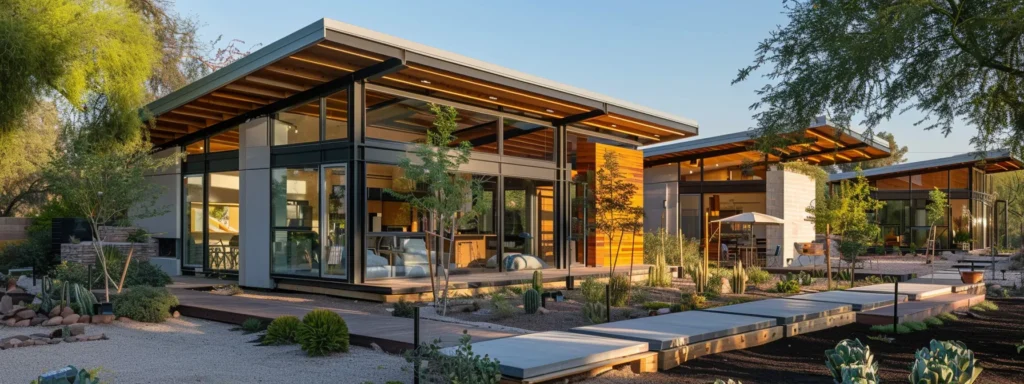
Energy-efficient building materials offer numerous advantages that significantly enhance sustainability in construction projects. They effectively reduce energy consumption and utility costs, while also improving indoor comfort and air quality. Additionally, materials like polyurethane foam contribute to the longevity of structures, boosting property value and market appeal. By prioritizing these materials, homeowners can actively participate in environmental conservation efforts.
This section will delve into each of these key benefits, exploring how energy-efficient solutions, including foam insulation and energy storage systems, align with standards like BREEAM, ultimately leading to a more sustainable future.
Reducing Energy Consumption and Utility Costs
Energy-efficient building materials, such as plywood, bamboo, and clay, play a significant role in reducing energy consumption and utility costs for homeowners. By incorporating these materials into construction projects, architects can design structures that maximize insulation and minimize heat loss, leading to lower heating and cooling expenses. Additionally, integrating solar power systems can further enhance energy efficiency, allowing homeowners to harness renewable energy and reduce reliance on traditional power sources.
- Utilizing plywood and bamboo for structural integrity.
- Incorporating clay for natural insulation properties.
- Designing with solar power systems for renewable energy.
- Lowering heating and cooling expenses through effective insulation.
- Enhancing overall energy efficiency in construction projects.
Enhancing Indoor Comfort and Air Quality
Energy-efficient building materials significantly enhance indoor comfort and air quality by improving the thermal insulation of the building envelope. For instance, incorporating materials like slate in the construction of a basement can help regulate temperature fluctuations, ensuring a more stable and comfortable living environment. Additionally, efficient water heating systems can be integrated with these materials, further promoting energy savings and contributing to a healthier indoor atmosphere.
Increasing the Longevity of Your Building
Incorporating energy-efficient materials such as polyurethane and fiberglass can significantly increase the longevity of a building. These materials provide superior insulation, which helps maintain stable indoor temperatures and reduces wear on heating and cooling systems. Additionally, integrating passive solar building design principles can enhance energy efficiency, further extending the lifespan of structural components like floors by minimizing thermal stress and moisture-related issues.
Boosting Property Value and Market Appeal
Incorporating energy-efficient materials into a construction project can significantly boost property value and market appeal. Features such as advanced glazing and radiant barriers not only enhance the aesthetic of sustainable architecture but also improve energy performance, making homes more attractive to potential buyers. By prioritizing sustainable design, homeowners can create spaces that are not only environmentally friendly but also desirable in a competitive real estate market, addressing the growing demand for energy-efficient living solutions.
Contributing to Environmental Conservation
Utilizing energy-efficient building materials, such as oriented strand board and cellulose insulation, plays a significant role in environmental conservation. These materials often incorporate recycled content, reducing the demand for new lumber and minimizing waste in North America. By choosing sustainable options, homeowners not only lower their carbon footprint but also contribute to a circular economy that emphasizes recycling and responsible resource management.
| Energy-Efficient Material | Environmental Benefit |
|---|---|
| Oriented Strand Board | Utilizes recycled wood fibers, reducing waste and conserving resources. |
| Cellulose Insulation | Made from recycled paper products, enhancing energy efficiency and sustainability. |
| Lumber | When sourced sustainably, it supports responsible forestry practices and reduces deforestation. |
Choosing the right materials can change everything. Let’s look at some popular options that can make your project both efficient and effective.
Popular Types of Energy-Efficient Building Materials
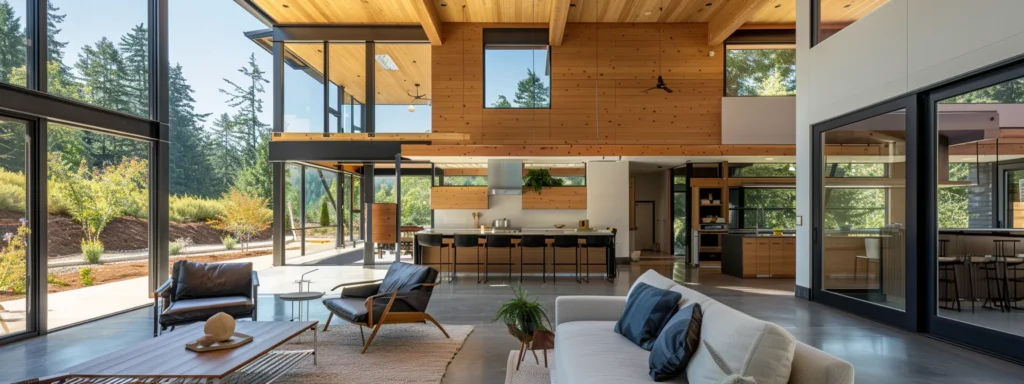
Insulated Concrete Forms provide superior insulation, reducing greenhouse gas emissions and enhancing energy efficiency. Low-emissivity windows minimize heat loss, while recycled steel and reclaimed wood promote sustainability. Cool roofing materials reflect heat, and sustainable insulation options like wool and cellulose contribute to climate change mitigation. Each of these materials plays a vital role in maximizing sustainability in construction projects.
Insulated Concrete Forms for Better Insulation
Insulated Concrete Forms (ICFs) are an excellent choice for enhancing energy efficiency in construction projects. These forms provide superior insulation, significantly reducing energy consumption for heating and cooling, which can lead to lower utility bills. By maintaining a stable indoor temperature, ICFs help homeowners optimize their thermostat settings and create comfortable living spaces, while also allowing for ample daylight to enter the home, further enhancing the overall environment. Additionally, when combined with insulation materials like wool in attics, ICFs contribute to a comprehensive energy-efficient strategy that supports sustainability goals.
Low-Emissivity Windows to Minimize Heat Loss
Low-emissivity (Low-E) windows are a vital component in energy-efficient building materials, designed to minimize heat loss and enhance indoor comfort. By reflecting heat back into the home during winter and keeping it out during summer, these windows significantly reduce utility costs and lower the carbon footprint of residential and commercial buildings. In urban planning, incorporating Low-E windows can lead to improved ventilation and energy efficiency, making structures more sustainable and reducing the amount of scrap generated during construction.
| Feature | Benefit |
|---|---|
| Heat Reflection | Reduces energy consumption for heating and cooling. |
| Utility Cost Savings | Lower monthly energy bills for homeowners. |
| Carbon Footprint Reduction | Contributes to a more sustainable environment. |
| Enhanced Ventilation | Improves indoor air quality and comfort. |
Recycled Steel and Reclaimed Wood for Sustainability
Recycled steel and reclaimed wood are pivotal in promoting sustainability within the built environment. By utilizing these materials, builders can significantly reduce greenhouse gas emissions associated with new material production, while also minimizing waste. For instance, incorporating reclaimed wood not only adds character to a project but also enhances insulation when paired with spray foam, leading to improved efficiency in heating systems and overall energy savings.
Cool Roofing Materials to Reflect Heat
Cool roofing materials are designed to reflect solar gain, significantly reducing heat absorption in buildings. According to the International Energy Agency, these materials can lower roof surface temperatures by up to 30 degrees Fahrenheit, which in turn decreases the need for air conditioning and reduces carbon dioxide emissions. The National Association of Home Builders emphasizes that incorporating cool roofing options, such as reflective coatings or specially designed shingles, not only enhances energy efficiency but also extends the lifespan of roofing materials like cement, making them a smart choice for sustainable construction projects.
Sustainable Insulation Options Like Wool and Cellulose
Sustainable insulation options like wool and cellulose are excellent choices for enhancing energy efficiency in construction projects. Wool, a natural fiber, provides superior thermal performance while also regulating humidity, which can improve indoor air quality. Cellulose, made from recycled paper, not only offers effective insulation but also contributes to efficient energy use by minimizing heat loss through ceilings and walls, making it a practical solution for homeowners looking to reduce their energy bills.
| Insulation Type | Benefits |
|---|---|
| Wool | Natural fiber that regulates humidity and improves indoor air quality. |
| Cellulose | Made from recycled materials, minimizes heat loss, and enhances energy efficiency. |
Understanding the types of energy-efficient building materials is just the beginning. Next, it’s time to consider how to select the best options for your project.
How to Choose the Right Energy-Efficient Materials
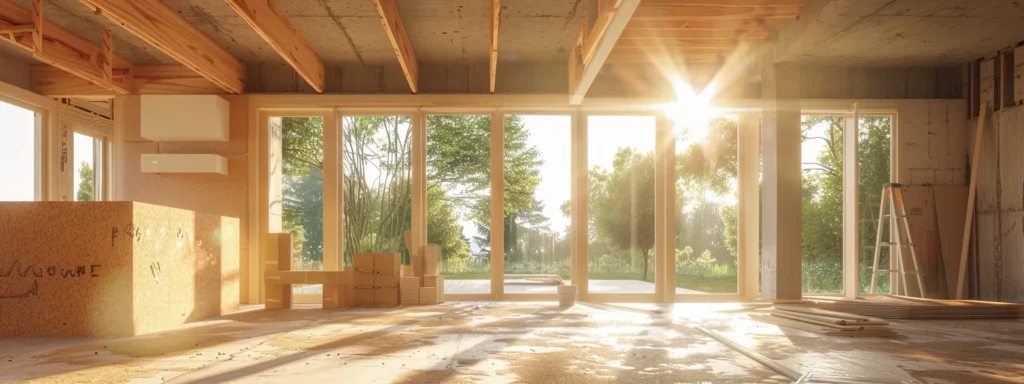
How to Choose the Right Energy-Efficient Materials
Choosing the right energy-efficient materials for a construction project involves several key considerations. First, assessing the project’s specific needs ensures that the selected materials align with the intended design and functionality. Evaluating material performance and ratings, including their effectiveness in managing stormwater and thermal efficiency through infrared technology, is essential. Additionally, homeowners should weigh initial costs against long-term savings to make informed decisions. Sourcing materials locally, such as cork, can further reduce the carbon footprint and support a circular economy. Finally, consulting with green building professionals provides valuable insights and expertise to optimize material selection.
Assessing Your Project's Specific Needs
Assessing a project’s specific needs is essential for selecting the right energy-efficient materials. Homeowners should consider factors such as thermal bridge reduction, which minimizes heat loss, and water efficiency, which ensures sustainable water management. By evaluating material efficiency and exploring options like green roofs, builders can enhance energy conservation while addressing the unique requirements of their construction project, ultimately leading to a more sustainable outcome.
Evaluating Material Performance and Ratings
Evaluating material performance and ratings is essential for selecting energy-efficient building materials that meet project goals. Homeowners should consider factors such as soundproofing capabilities, thermal efficiency, and the environmental impact of materials like steel and wood. For instance, materials with high ratings in energy consumption can significantly reduce utility costs, while those that integrate photovoltaics can harness solar energy, further enhancing sustainability.
| Material Type | Performance Feature | Benefits |
|---|---|---|
| Steel | Durability and strength | Long-lasting, reduces maintenance costs |
| Wood | Natural insulation properties | Improves energy efficiency and comfort |
| Photovoltaics | Energy generation | Reduces reliance on traditional power sources |
| Soundproofing Materials | Noise reduction | Enhances indoor comfort and privacy |
Considering Initial Costs vs. Long-Term Savings
When considering energy-efficient materials for a construction project, it is essential to weigh initial costs against long-term savings. While materials such as insulating concrete forms may have a higher upfront price, their superior insulation properties can lead to significant reductions in energy bills over time. Additionally, selecting products with low volatile organic compounds (VOCs) not only aligns with building code requirements but also contributes to a healthier indoor environment, making them a wise investment in both sustainability and occupant well-being.
Sourcing Materials Locally to Reduce Carbon Footprint
Sourcing materials locally is a strategic approach to reducing the carbon footprint of construction projects. By utilizing locally available resources such as brick, rammed earth, and structural insulated panels, builders can minimize transportation emissions and support regional economies. Additionally, integrating energy-efficient products like Energy Star-rated appliances and solar energy systems enhances overall sustainability, ensuring that projects not only meet environmental standards but also provide long-term benefits for homeowners and the community.
Consulting With Green Building Professionals
Consulting with green building professionals is a vital step in selecting the right energy-efficient materials for a construction project. These experts can provide insights on integrating home automation systems, which enhance energy management, and recommend materials like stucco that improve thermal mass, contributing to better energy efficiency. Additionally, they can advise on the installation of renewable energy solutions, such as wind turbines, and how to optimize roof designs for maximum sustainability.
- Seek expertise on energy-efficient materials.
- Incorporate home automation for better energy management.
- Consider stucco for improved thermal mass.
- Explore renewable energy options like wind turbines.
- Optimize roof designs for sustainability.
Now that the right materials are chosen, the next step is clear. It’s time to weave these choices into a design that breathes life and efficiency into your space.
Integrating Energy-Efficient Materials Into Your Design
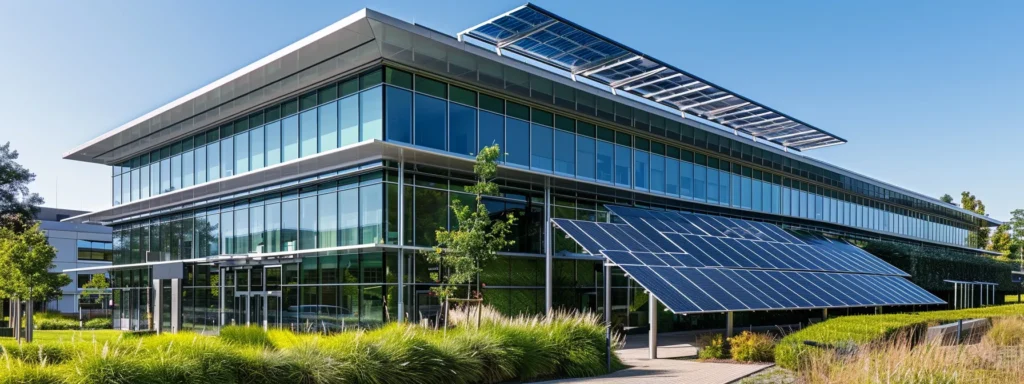
Integrating energy-efficient materials into design requires careful planning with architects and engineers to optimize the building’s climate response. Incorporating passive solar design principles and selecting complementary systems, such as heat pumps, can enhance energy efficiency while addressing potential challenges in implementation. Ensuring compliance with building codes and conducting an environmental impact assessment are essential steps to minimize carbon footprints and support a sustainable natural environment.
Planning Ahead With Architects and Engineers
Planning ahead with architects and engineers is essential for integrating energy-efficient materials into a construction project. By collaborating early in the design phase, professionals can optimize the use of renewable energy sources, such as maximizing sunlight exposure through strategic window placement. This proactive approach not only enhances energy management but also ensures that the building complies with environmental standards, reducing the presence of harmful organic compounds and promoting sustainable energy development.
Incorporating Passive Solar Design Principles
Incorporating passive solar design principles is essential for maximizing energy efficiency in building projects. By strategically positioning windows and utilizing thermal mass materials, homeowners can harness natural sunlight to regulate indoor temperatures, reducing reliance on heating and cooling systems. The Building Research Establishment emphasizes that such design techniques not only enhance comfort but also contribute to significant energy savings over time.
| Passive Solar Design Principle | Benefit |
|---|---|
| Window Placement | Maximizes natural light and heat gain. |
| Thermal Mass Materials | Stabilizes indoor temperatures by absorbing and releasing heat. |
| Overhangs and Shading | Reduces heat gain in summer while allowing sunlight in winter. |
Selecting Complementary Systems and Technologies
Selecting complementary systems and technologies is essential for maximizing the benefits of energy-efficient building materials. Homeowners should consider integrating advanced heating, ventilation, and air conditioning (HVAC) systems that work harmoniously with energy-efficient materials, such as insulated concrete forms and low-emissivity windows. By doing so, they can enhance overall energy performance, reduce utility costs, and create a more comfortable living environment.
| System/Technology | Benefit |
|---|---|
| Advanced HVAC Systems | Optimizes energy use and improves indoor air quality. |
| Smart Thermostats | Enhances energy management and reduces heating/cooling costs. |
| Solar Energy Systems | Provides renewable energy, lowering reliance on traditional power sources. |
| Energy Recovery Ventilators | Improves ventilation while minimizing energy loss. |
Addressing Potential Challenges in Implementation
Addressing potential challenges in the implementation of energy-efficient materials requires careful planning and collaboration among all stakeholders involved in the construction process. Homeowners and builders must anticipate issues such as compatibility with existing structures and the need for specialized installation techniques. By engaging with experienced professionals who understand the nuances of energy-efficient solutions, they can navigate these challenges effectively, ensuring that the materials perform as intended and contribute to the overall sustainability of the project.
Ensuring Compliance With Building Codes and Standards
Ensuring compliance with building codes and standards is essential when integrating energy-efficient materials into a construction project. Homeowners and builders must familiarize themselves with local regulations that govern energy efficiency, as these codes often dictate the types of materials and construction methods that can be used. By collaborating with experienced professionals who understand these requirements, they can effectively navigate the complexities of compliance, ensuring that their projects not only meet legal standards but also maximize sustainability and energy performance.
Energy-efficient materials can transform a space, but the true test lies in their application. Here are real-world success stories that showcase how these choices have made a difference.
Real-World Success Stories and Case Studies
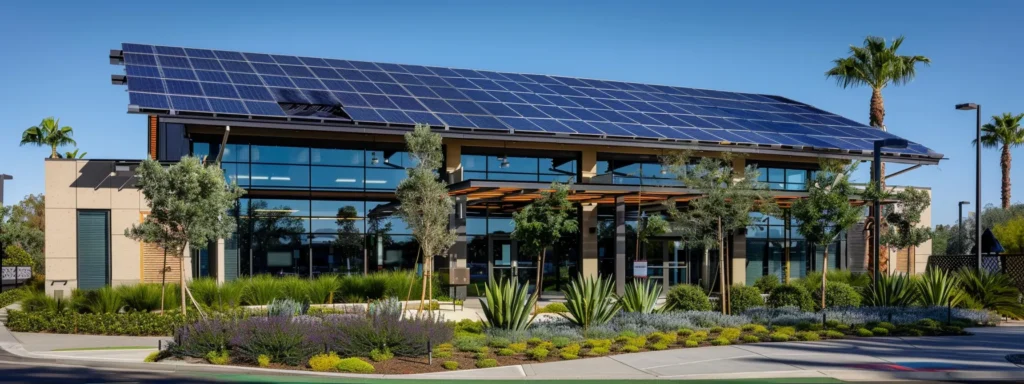
This section highlights real-world success stories that demonstrate the advantages of energy-efficient building materials. It will cover residential projects exemplifying sustainability, commercial buildings leading in energy efficiency, and community structures with a significant environmental impact. Additionally, it will explore lessons learned from pioneering green projects and inspiring trends in sustainable construction, providing practical insights for future endeavors.
Residential Projects Exemplifying Sustainability
Residential projects exemplifying sustainability showcase the effective use of energy-efficient building materials to create comfortable and environmentally friendly homes. For instance, a recent project in a suburban neighborhood utilized insulated concrete forms and low-emissivity windows, resulting in a significant reduction in energy consumption and utility costs. Homeowners reported improved indoor air quality and comfort, demonstrating the tangible benefits of integrating sustainable materials into residential construction:
- Utilization of insulated concrete forms for superior insulation.
- Installation of low-emissivity windows to minimize heat loss.
- Enhanced indoor air quality through sustainable material choices.
- Significant reduction in energy consumption and utility costs.
Commercial Buildings Leading in Energy Efficiency
Commercial buildings are increasingly adopting energy-efficient building materials to enhance sustainability and reduce operational costs. For example, a prominent office complex in a metropolitan area utilized insulated concrete forms and low-emissivity windows, resulting in a 30% reduction in energy consumption compared to traditional structures. These advancements not only lower utility expenses but also improve indoor air quality, making them attractive options for businesses aiming to meet environmental standards while enhancing employee comfort.
Community Structures With Environmental Impact
Community structures that prioritize energy-efficient building materials have made significant strides in promoting environmental sustainability. For instance, a community center in an urban area utilized recycled steel and low-emissivity windows, resulting in a notable reduction in energy consumption and operational costs. These initiatives not only enhance the building’s performance but also serve as a model for other projects aiming to achieve sustainability goals:
| Community Structure | Materials Used | Environmental Impact |
|---|---|---|
| Urban Community Center | Recycled steel, low-emissivity windows | Reduced energy consumption and operational costs |
Lessons Learned From Pioneering Green Projects
Pioneering green projects have provided valuable lessons in the effective use of energy-efficient building materials. For instance, integrating insulated concrete forms and low-emissivity windows has consistently demonstrated significant reductions in energy consumption and operational costs. These projects highlight the importance of selecting sustainable materials that not only enhance building performance but also contribute to long-term savings and improved indoor air quality, guiding future construction efforts toward maximizing sustainability.
Inspiring Trends in Sustainable Construction
Inspiring trends in sustainable construction are reshaping the industry, emphasizing the importance of energy-efficient building materials. Many projects now incorporate innovative solutions such as green roofs, which not only enhance insulation but also promote biodiversity. Additionally, the use of reclaimed materials is gaining traction, allowing builders to reduce waste while creating unique, character-rich spaces that appeal to environmentally conscious homeowners.
| Project Type | Materials Used | Key Benefits |
|---|---|---|
| Residential Green Roof | Energy-efficient insulation, native plants | Improved insulation, enhanced biodiversity |
| Reclaimed Wood Home | Reclaimed timber, low-VOC finishes | Reduced waste, unique aesthetic |
Conclusion
Maximizing sustainability through energy-efficient building materials is essential for reducing energy consumption and enhancing overall environmental quality in construction projects. By selecting materials like insulated concrete forms and low-emissivity windows, homeowners can significantly lower utility costs while improving indoor comfort and air quality. These choices not only contribute to a healthier living environment but also increase property value and market appeal. Embracing energy-efficient solutions empowers homeowners to actively participate in environmental conservation, making a meaningful impact on both their immediate surroundings and the broader community.

